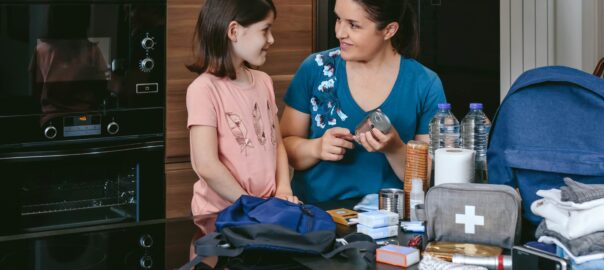We all want to make sure our families are safe and taken care of during an emergency. You may have looked at ideas for what it might take to be prepared for emergencies, but sometimes the thought of spending a lot of money can be overwhelming. The good news is you don’t have to empty your wallet to get ready for unexpected situations. With a little creativity and planning, you can build a solid emergency preparedness plan without blowing your budget.
Here are ten financially friendly tips to help you get started:
1. Start with the Basics
Begin by creating a basic emergency kit with essentials like warmth, light, non-perishable food, and a first aid kit. Put together items you already have around your home, like flashlights, batteries, and first aid supplies. Don't forget things like blankets, tarps, and plastic bags can all be useful. Make a list of what you already have so you don’t buy unnecessary duplicates.
2. Think about Water
The rule for water is one gallon per person per day. And a pet counts as a person. Consider how much water you can store, where you would store it, and the best way for you to build and rotate your water. If needed think about resources nearby that might provide water. If you need to filter it, you'll need to prepare for that too.
3. Shop Smart
When shopping for emergency supplies, look for sales and discounts. You can also find affordable items at dollar stores or thrift shops to complete your kit.
4. Start Small
Remember, you don’t have to buy everything at once. You can even start by picking up 2-3 extra cans of food or a needed medical item each time you go grocery shopping. Over time, you’ll build up a nice supply without a big expense all at once.
5. Prioritize
Prioritize your emergency supplies based on your family's needs. For example, if you have young children, you may want to prioritize diapers and formula. If you have a family member with health issues you'll want to be mindful of medications or supplies. Don't forget to plan for family pets and what they need.
6. Create a Plan
Create a family emergency plan that includes a communication plan, evacuation routes, and a meeting spot. You can also practice your plan with a drill to make sure everyone knows what to do in case of an emergency.
7. Review and Adjust
Regularly review your emergency plan and supplies to make sure they're up-to-date and relevant to your family's needs. Make adjustments as needed to stay prepared.
8. Basic DIY
Knowing how to do things yourself can save you in an emergency. Learn how to turn off utilities if needed, how to properly wash your hand, how to stay warm/dry/cool in an emergency. Building a preparedness library is helpful as during an emergency the internet may not be available.
9. Use Public Resources
Take advantage of public resources like community centers, libraries, and fire stations that may offer emergency preparedness resources, first aid training, and supplies.
10. Join PPM
The Preparedness Pantry Masterclass, part of The Kitchen Table, a private membership community, offers a growing collection of classes for building a preparedness pantry, first aid preparedness, weather-related situations, and more. There are also live monthly calls providing even more support and training.
There you have it – my top 10 ways to start working on emergency preparedness without breaking the bank. By following these simple tips, you can prepare your family for any emergency without sacrificing your financial goals.
Being prepared doesn’t mean you need to spend a ton of cash. When you’re building your preparedness plan, it’s helpful to know what you can get inexpensively at the dollar store. See what I got on my latest trip to Dollar Tree.


